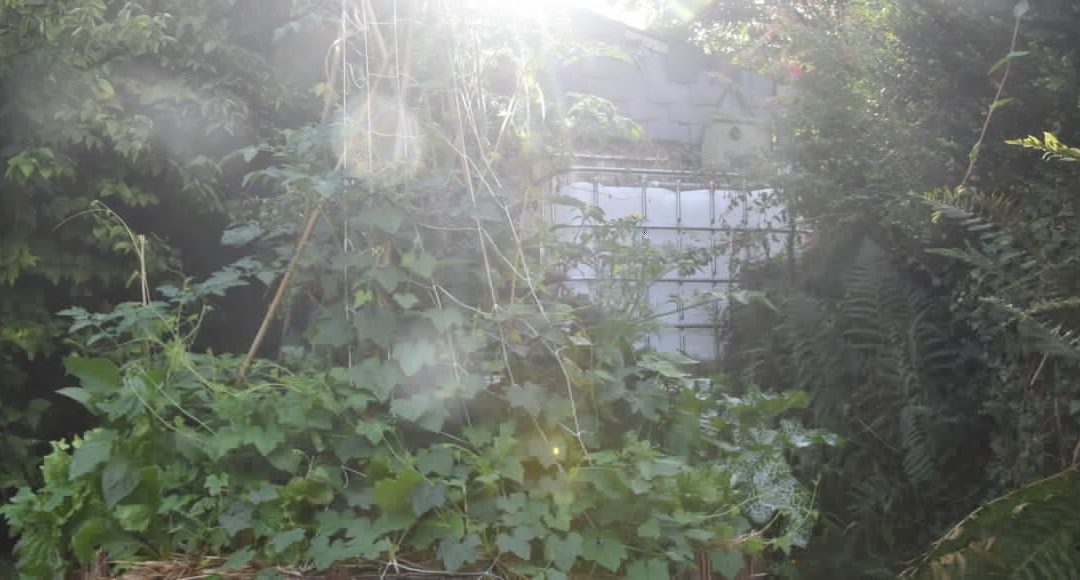Aria Persei
Filtering ❣ On the way to Remembrance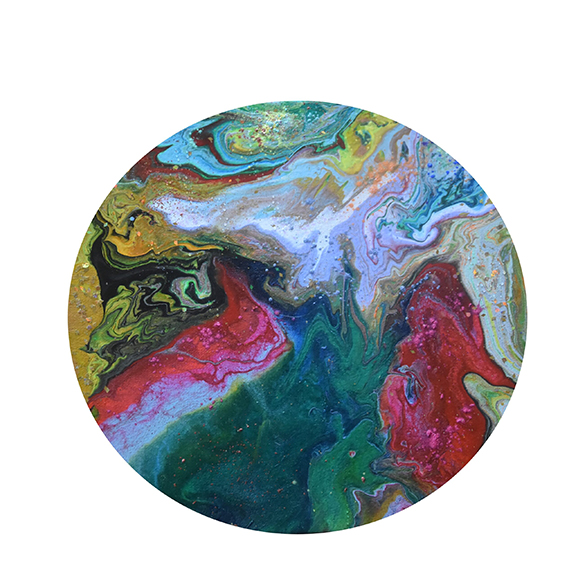 www.ariapersei.com
www.ariapersei.com
Permaculture, edible garden forest and behaviours and thought patterns around autonomy:observing, learning and respecting principles that are life-giving
There is a whole part of nature’s life that is unknown to us and a consciousness that animates each life form. In each of our actions, we can work in favor of a richer biodiversity. Our gardens represent large surfaces where we have the power to act and transform. Wildlife finds refuge in our gardens and its nooks, woodpiles and hollow stems. Why did we never learn about the life of a seed in school? The connection to organic values poses a great danger to the control systems in place. Here is a tale of some actions to increase the resilience of our gardens.
Today, we are invited to return to our original autonomy on all levels so as not to depend on the solutions put in place by governments (who are in no way interested in our well-being). Part of working for a better existence in this realm works through increasing the resilience of our gardens. If there is one crucial point on which it is necessary to be autonomous, it is about water. The water industry is about millions of euros every year. Next comes food self- sufficiency, heating and electricity. It is always better to teach a man to feed himself than to give him a one-off crutch of the food he needs today. Installing rainwater harvesting tanks in the garden is an excellent investment, thinking about a system that reuses wastewater and water filtration systems. Collecting spring water charged with electromagnetic currents will always be the best option (identifying a source close to our homes with findaspring.com). However, their access could be “confiscated” by those who claim to have authority over us. But what authority do they really have if not the authority we think they have on us ? We are our own authority. Learning about permaculture is a way to move towards greater autonomy and sovereignty while moving closer to the laws of life rather than those of destruction.
sufficiency, heating and electricity. It is always better to teach a man to feed himself than to give him a one-off crutch of the food he needs today. Installing rainwater harvesting tanks in the garden is an excellent investment, thinking about a system that reuses wastewater and water filtration systems. Collecting spring water charged with electromagnetic currents will always be the best option (identifying a source close to our homes with findaspring.com). However, their access could be “confiscated” by those who claim to have authority over us. But what authority do they really have if not the authority we think they have on us ? We are our own authority. Learning about permaculture is a way to move towards greater autonomy and sovereignty while moving closer to the laws of life rather than those of destruction. These principles are concerned with enriching the soil and doing good for the surrounding flora and fauna. By learning to observe nature, the impression is to come out of the fog and states of blindness. Nature is generous and well-adapted plants will produce seeds in abundance. It is about giving back to all life and strengthening the organic reality of the original templates of creation. It is about restoring the peaceful sovereign authority of the living to the living. The natural cycle follows its own course without giving account to anyone about the truth it carries. Putting our hands in the earth helps us to reconnect to the organic harmonic fields.
These principles are concerned with enriching the soil and doing good for the surrounding flora and fauna. By learning to observe nature, the impression is to come out of the fog and states of blindness. Nature is generous and well-adapted plants will produce seeds in abundance. It is about giving back to all life and strengthening the organic reality of the original templates of creation. It is about restoring the peaceful sovereign authority of the living to the living. The natural cycle follows its own course without giving account to anyone about the truth it carries. Putting our hands in the earth helps us to reconnect to the organic harmonic fields.
The inversion targeting food producers and farmers
There is something sad about monotonous and uniform monocultures placed in rows. Nature does not order itself in such a way, but man away from his original nature (under mind control) does. The dominant agricultural system is constantly artificializing nature, undermining biological processes and the capacity of ecosystems to generate bio-abundance. It is a perversion and inversion of the basic principles of the peasant’s dedication: from being a bearer of life, he becomes a sower of death. Everything is being done to push food producers towards increasingly sophisticated and dehumanized techniques, replacing manual labor with machines, replacing organic food with artificial food. Everything is done to encourage the culture of vulnerable and weak plants while the forest garden model allows for sustainability; modern agriculture is dependent on a small number of annual plants. We are under active attack, every day. What they want is submission and complete surrender. Many will feel forced to accept the measures proposed by governments for the sake of believing they have no other option to feed and take care of their families.
Food autonomy and principles of cooperation
Ingesting polluted industrial food is a form of transgression of our body’s biology, an attack on organic life. It is a matter of not eating dead food and learning to be able to produce part of our food ourselves, to recreate an edible landscape t hat nourishes, inspires and protects. Satisfying a growing part of our vital needs appears to be fundamental, not only with a vegetable garden to be renewed every season but also by planting an edible forest garden which, once established, will produce without the need for frequent interventions. These simple actions are a source of health and reconnection. Naturally grown, sun-drenched fruits and vegetables, eaten soon after their harvest, are full of life energy. The food producers of today and tomorrow are not of the agricultural classes and are the keepers of the organic templates. Their fields and gardens are places ofhealing, beauty and organic coherence (if they work in cooperation with the organic templates). We are invited to organize quietly in wild and remote landscapes. Self-sustaining communities that can meet their vital needs are less focused on the anxiety of scarcity, which makes room for unwise decisions. Co-habiting for months with the fruits and vegetables that will feed us before eating them is an experience that completely changes our relationship to our food. By making sure that a percentage of what we plant will go to the animals around us, we are part of a favorable frequency for the living.
hat nourishes, inspires and protects. Satisfying a growing part of our vital needs appears to be fundamental, not only with a vegetable garden to be renewed every season but also by planting an edible forest garden which, once established, will produce without the need for frequent interventions. These simple actions are a source of health and reconnection. Naturally grown, sun-drenched fruits and vegetables, eaten soon after their harvest, are full of life energy. The food producers of today and tomorrow are not of the agricultural classes and are the keepers of the organic templates. Their fields and gardens are places ofhealing, beauty and organic coherence (if they work in cooperation with the organic templates). We are invited to organize quietly in wild and remote landscapes. Self-sustaining communities that can meet their vital needs are less focused on the anxiety of scarcity, which makes room for unwise decisions. Co-habiting for months with the fruits and vegetables that will feed us before eating them is an experience that completely changes our relationship to our food. By making sure that a percentage of what we plant will go to the animals around us, we are part of a favorable frequency for the living.
 In nature, there is more self-help than competition, which sometimes happens because of accessibility to light. Plants adopt elaborate behaviours: plants of the same family will politely reduce the growth speed of their roots so as not to disturb their peers. This can be seen as a certain form of altruism. Nature follows its own rhythm and is on time to fulfill its numerous missions. Let us be assistants to these forces in action and offer plants around us the most favorable conditions for their development. Working towards food self-sufficiency is another step towards sovereignty, with a productive garden that regenerates the soil and all local biodiversity, without the need for the soil to be worked or for treatments to be applied. Understanding how the soil works, selecting productive plants that are resistant to disease and reproductible; every day, a few small gestures here and there allow us to move forward gradually. After a few months, things have already taken shape and the garden is transformed with a beautiful part reserved for edible zones.
In nature, there is more self-help than competition, which sometimes happens because of accessibility to light. Plants adopt elaborate behaviours: plants of the same family will politely reduce the growth speed of their roots so as not to disturb their peers. This can be seen as a certain form of altruism. Nature follows its own rhythm and is on time to fulfill its numerous missions. Let us be assistants to these forces in action and offer plants around us the most favorable conditions for their development. Working towards food self-sufficiency is another step towards sovereignty, with a productive garden that regenerates the soil and all local biodiversity, without the need for the soil to be worked or for treatments to be applied. Understanding how the soil works, selecting productive plants that are resistant to disease and reproductible; every day, a few small gestures here and there allow us to move forward gradually. After a few months, things have already taken shape and the garden is transformed with a beautiful part reserved for edible zones.
Mucus-free gardens and biodiversity
Nature sometimes takes time to resolve imbalances. When nature is left undisturbed by man, where every predator has its place and can fulfill its role, there are no problems with slugs or aphids. In the gardens, wild species will be 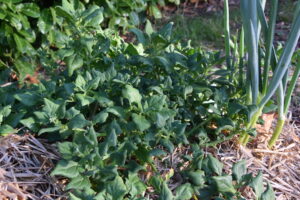 strong and resistant. There are innumerable edible perennial plants or plants able to spread their seeds on their own which, little by little, compose a perpetual vegetable garden. Biennial plants produce their seeds for reproduction in the second year and thus complete their cycle. Perennial plants reseed themselves and remain once implanted. When the soil becomes healthy and alive, well balanced, pests disappear. Weed plants are generally pioneer plants that are meant to establish themselves on degraded soils. Plants communicate in a gaseous way, notably to protect themselves from pathogens. Slugs regulate diseases by eating weak plants first. Green manures are fast-growing
strong and resistant. There are innumerable edible perennial plants or plants able to spread their seeds on their own which, little by little, compose a perpetual vegetable garden. Biennial plants produce their seeds for reproduction in the second year and thus complete their cycle. Perennial plants reseed themselves and remain once implanted. When the soil becomes healthy and alive, well balanced, pests disappear. Weed plants are generally pioneer plants that are meant to establish themselves on degraded soils. Plants communicate in a gaseous way, notably to protect themselves from pathogens. Slugs regulate diseases by eating weak plants first. Green manures are fast-growing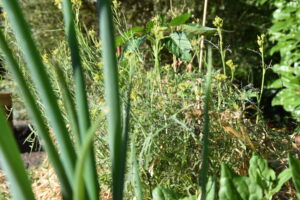 plants of various families selected for their soil-improving qualities, for the abundant biomass they produce and for their ability to supplant spontaneous flora. After their growth, they can be mowed and left as a cover for crops: stimulating the microbial life of the soil, improving its structure, protecting against erosion, accelerating humus mineralization, increasing the soil’s capacity to suppress pathogens, enriching it with nitrogen, promoting pollinators, and so on.
plants of various families selected for their soil-improving qualities, for the abundant biomass they produce and for their ability to supplant spontaneous flora. After their growth, they can be mowed and left as a cover for crops: stimulating the microbial life of the soil, improving its structure, protecting against erosion, accelerating humus mineralization, increasing the soil’s capacity to suppress pathogens, enriching it with nitrogen, promoting pollinators, and so on.
The best time to start is now, no matter what the season. Vegetable gardens, greenhouses and dry toilets may be placed in the areas closest to the house. A sunny exposure is favorable for the vegetable garden, with corners of 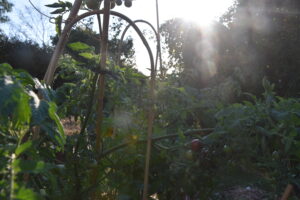 shade that the plants will appreciate. For insects, it is often beneficial to intersperse different aromatic plants in the crops. Some plantations are left to nature, a percentage of the harvest is planted to provide to the living. By placing the seed in contact with human saliva, it will receive a lot of information about where we are in the journey and who we are. It is one more step in awareness with what we are ingesting. A week before transplanting young plants in the garden, we can cut some pieces of their leaves, to simulate their defenses as per imitating an attack of slugs. When the bees start foraging, they tell us that it is a good time to harvest: the fruits and flowers are perfectly ripe. They recognize this by the
shade that the plants will appreciate. For insects, it is often beneficial to intersperse different aromatic plants in the crops. Some plantations are left to nature, a percentage of the harvest is planted to provide to the living. By placing the seed in contact with human saliva, it will receive a lot of information about where we are in the journey and who we are. It is one more step in awareness with what we are ingesting. A week before transplanting young plants in the garden, we can cut some pieces of their leaves, to simulate their defenses as per imitating an attack of slugs. When the bees start foraging, they tell us that it is a good time to harvest: the fruits and flowers are perfectly ripe. They recognize this by the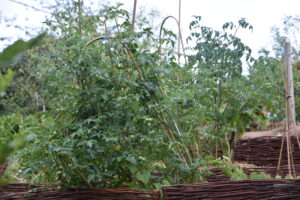 chromatic range they are able to pick up. Watering deeply, less frequently and in larger quantities, encourages trees to get their roots deep in the ground. Young small zucchini will often be tastier than larger ones. Harvesting often will encourage the plant to produce more. Personally, I mainly opt for a vegetable garden with mucus-free options, especially during spring and summer. In the fall and winter, there will be denser options (especially from the pumpkin families and raddishes). Growing foods that leave behind as little metabolic waste as possible will be a priority (iceberg or miner lettuce, celery, bok choy, tomatoes, zucchini, chives, carrots, beets ; and in moderation, for example, radishes, leeks, chilli, onions and garlic).
chromatic range they are able to pick up. Watering deeply, less frequently and in larger quantities, encourages trees to get their roots deep in the ground. Young small zucchini will often be tastier than larger ones. Harvesting often will encourage the plant to produce more. Personally, I mainly opt for a vegetable garden with mucus-free options, especially during spring and summer. In the fall and winter, there will be denser options (especially from the pumpkin families and raddishes). Growing foods that leave behind as little metabolic waste as possible will be a priority (iceberg or miner lettuce, celery, bok choy, tomatoes, zucchini, chives, carrots, beets ; and in moderation, for example, radishes, leeks, chilli, onions and garlic).
Experiments and personal journey
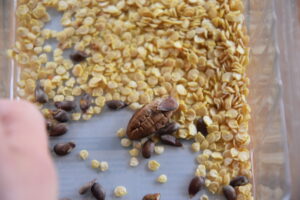 I learned to observe the path of the shade of plants during a day and its impact on the surrounding plants. I learned to pay attention to male and female flowers of the zucchini. One summer evening, I heard a strange noise in the garden. It took me a short moment to understand what it was about, it had been many moons since I had the great joy of witnessing the existence of 2 hedgehogs. A few days earlier, I had seen a small snake and a frog crossing the lower part of the garden where I had installed 5 round cultivation mounds. I learned how to harvest tomato and apple seeds, which for the latter I kept in the fridge rolled up in wet cloth for 8 to 12 weeks before putting them in soil with the hope to see a young apple tree soon emerge. I learned how to keep the seeds and pits of certain fruits that I eat and pay attention t
I learned to observe the path of the shade of plants during a day and its impact on the surrounding plants. I learned to pay attention to male and female flowers of the zucchini. One summer evening, I heard a strange noise in the garden. It took me a short moment to understand what it was about, it had been many moons since I had the great joy of witnessing the existence of 2 hedgehogs. A few days earlier, I had seen a small snake and a frog crossing the lower part of the garden where I had installed 5 round cultivation mounds. I learned how to harvest tomato and apple seeds, which for the latter I kept in the fridge rolled up in wet cloth for 8 to 12 weeks before putting them in soil with the hope to see a young apple tree soon emerge. I learned how to keep the seeds and pits of certain fruits that I eat and pay attention t o them, to collect red bell pepper, melon or watermelon seeds and dry and store them. I started to harvest apricot, peach and nectarine pits, as well as dates. I began to collect the bottom pieces of celery, leeks and small onions so that they could continue to produce a second time. I placed them in water on sticks, floating. When the leaves began to grow again, I would plant them in the soil.
o them, to collect red bell pepper, melon or watermelon seeds and dry and store them. I started to harvest apricot, peach and nectarine pits, as well as dates. I began to collect the bottom pieces of celery, leeks and small onions so that they could continue to produce a second time. I placed them in water on sticks, floating. When the leaves began to grow again, I would plant them in the soil.
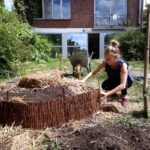 I learned how to make mounds by marking the surface with wood pieces and then covering with organic matter, nitrogen-rich materials (green garden waste, grass, leftovers from animal products) and carbonaceous material (straw, paper, dried leaves). It is shared that urine can be used in the garden to balance the soil. One can make their own green powder from dehydrated nettle or a nettle or comfrey manure, fermented for several weeks. These liquid manures should be diluted to 10% and used once out of 5 times maximum. In the compost, I incorporate citrus fruits, bones and animal fat (from my cats’ food). Next fall and winter, I will
I learned how to make mounds by marking the surface with wood pieces and then covering with organic matter, nitrogen-rich materials (green garden waste, grass, leftovers from animal products) and carbonaceous material (straw, paper, dried leaves). It is shared that urine can be used in the garden to balance the soil. One can make their own green powder from dehydrated nettle or a nettle or comfrey manure, fermented for several weeks. These liquid manures should be diluted to 10% and used once out of 5 times maximum. In the compost, I incorporate citrus fruits, bones and animal fat (from my cats’ food). Next fall and winter, I will make sure to collect the ashes from burnt wood, which is said to be rich in nutrients such as potash and calcium, and scatter it in the garden, at a rate of one handful per square meter. Since last year, I have planted more than 100 new varieties of vegetables, fruit trees and small shrubs in the garden to begin to ensure my food survival. In the future, I would like to ensure the food survival of a small community that is already growing in the astral.
make sure to collect the ashes from burnt wood, which is said to be rich in nutrients such as potash and calcium, and scatter it in the garden, at a rate of one handful per square meter. Since last year, I have planted more than 100 new varieties of vegetables, fruit trees and small shrubs in the garden to begin to ensure my food survival. In the future, I would like to ensure the food survival of a small community that is already growing in the astral.
Forest garden, wild plants and fruit trees
The forest garden template has an exceptional set of environmental and societal benefits. It is indeed a sustainable, self-sustaining, resilient, productive system that does not use fossil fuels, water or fertilizer. These types of initiatives 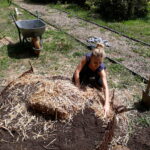 help to strengthen food security for communities. Trees are a natural form of retirement savings. Living in nature, multiplying exchanges, symbiotic and cooperative relationships, is closer to what real life is about, a varied and fulfilling existence that allows us to develop our potential as human beings and that does not constantly counter act against us. In the properties, large trees (apple, walnut, chestnut) may be planted every 8 meters, medium
help to strengthen food security for communities. Trees are a natural form of retirement savings. Living in nature, multiplying exchanges, symbiotic and cooperative relationships, is closer to what real life is about, a varied and fulfilling existence that allows us to develop our potential as human beings and that does not constantly counter act against us. In the properties, large trees (apple, walnut, chestnut) may be planted every 8 meters, medium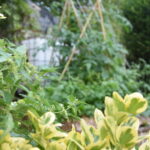 fruit trees (apricot, fig, pear) every 6 meters and small fruit trees (hazelnut trees for pruning, peach, plum, pear, elder, red fruit) all around. Some trees fix nitrogen (elagnus, sea buckthorn), some plants make good ground cover (mint, comfrey). Five years after planting, lianas and climbing species can be introduced. The best time to harvest wild plants is often the first weeks of spring, when the leaves are young and tender.
fruit trees (apricot, fig, pear) every 6 meters and small fruit trees (hazelnut trees for pruning, peach, plum, pear, elder, red fruit) all around. Some trees fix nitrogen (elagnus, sea buckthorn), some plants make good ground cover (mint, comfrey). Five years after planting, lianas and climbing species can be introduced. The best time to harvest wild plants is often the first weeks of spring, when the leaves are young and tender.
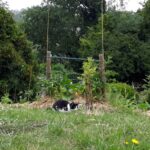 Every climate will see different varieties of trees do well. In Belgium and France, here is a non-exhaustive list of fruit trees that can withstand the temperatures of winter: fruit trees such as the paw paw tree (which produces creamy fruits with a mango-banana flavor), the feijoa (Brazilian guava tree that can withstand temperatures as low as -15°C and produces tart fruits that can be harvested in October and November) or the male dogwood (whose fruits can be eaten like medlars) will tolerate winter temperatures that go well below zero. Others are: nashi; German medlar (harvested in December); Japanese medlar, Himalaya mountain banana; yuzu lemon; gingko, Japanese goumi; aronia (a kind of cooked black currant). At their feet, a thick mulch can be established. Nuts (walnut, chestnut, macadamia, pecan) can be placed in the more remote areas of the garden; harvests of up to 30 kilos of dried fruits per tree can be hoped for. However, this is a step aside from the mucus-free way of eating, and many people have allergies to nuts, even if they don’t show up clearly. At the foot of sensitive trees, it is possible to plant alliaceous plants (garlic, onion, leek, shallot, chives) which will protect them against diseases. Thinking about early and late varieties for fruit trees (like the different varieties of raspberry trees that can be harvested from June to November) and paying attention to the harvesting time of fruit trees allows to spread the production over the year. For example, persimmons need a frost to ripen, they are harvested late in the fall.
Every climate will see different varieties of trees do well. In Belgium and France, here is a non-exhaustive list of fruit trees that can withstand the temperatures of winter: fruit trees such as the paw paw tree (which produces creamy fruits with a mango-banana flavor), the feijoa (Brazilian guava tree that can withstand temperatures as low as -15°C and produces tart fruits that can be harvested in October and November) or the male dogwood (whose fruits can be eaten like medlars) will tolerate winter temperatures that go well below zero. Others are: nashi; German medlar (harvested in December); Japanese medlar, Himalaya mountain banana; yuzu lemon; gingko, Japanese goumi; aronia (a kind of cooked black currant). At their feet, a thick mulch can be established. Nuts (walnut, chestnut, macadamia, pecan) can be placed in the more remote areas of the garden; harvests of up to 30 kilos of dried fruits per tree can be hoped for. However, this is a step aside from the mucus-free way of eating, and many people have allergies to nuts, even if they don’t show up clearly. At the foot of sensitive trees, it is possible to plant alliaceous plants (garlic, onion, leek, shallot, chives) which will protect them against diseases. Thinking about early and late varieties for fruit trees (like the different varieties of raspberry trees that can be harvested from June to November) and paying attention to the harvesting time of fruit trees allows to spread the production over the year. For example, persimmons need a frost to ripen, they are harvested late in the fall.
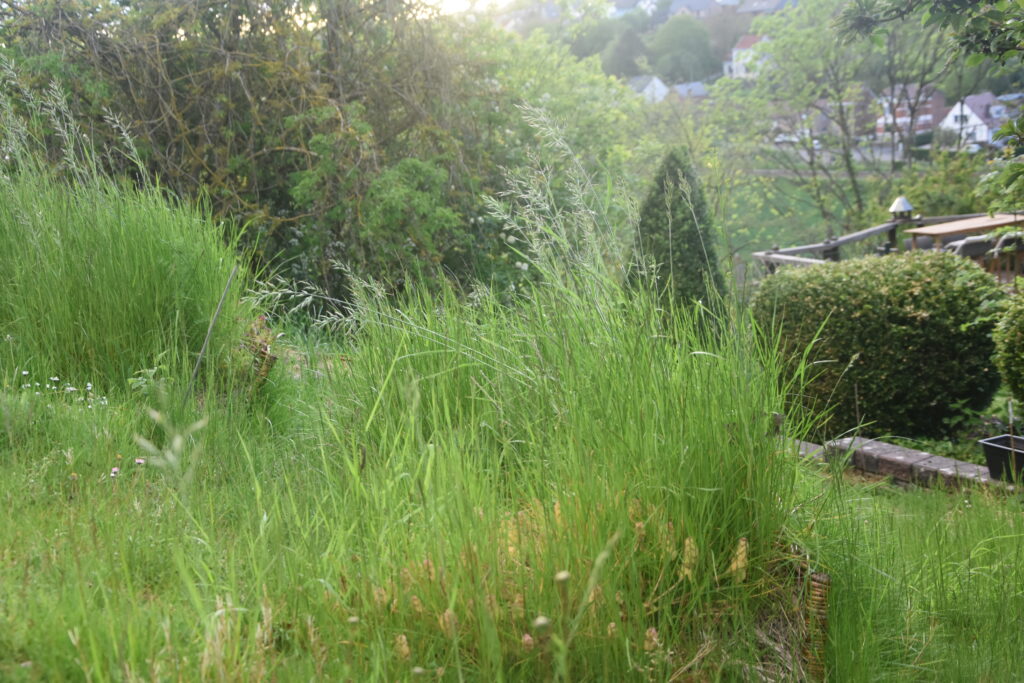
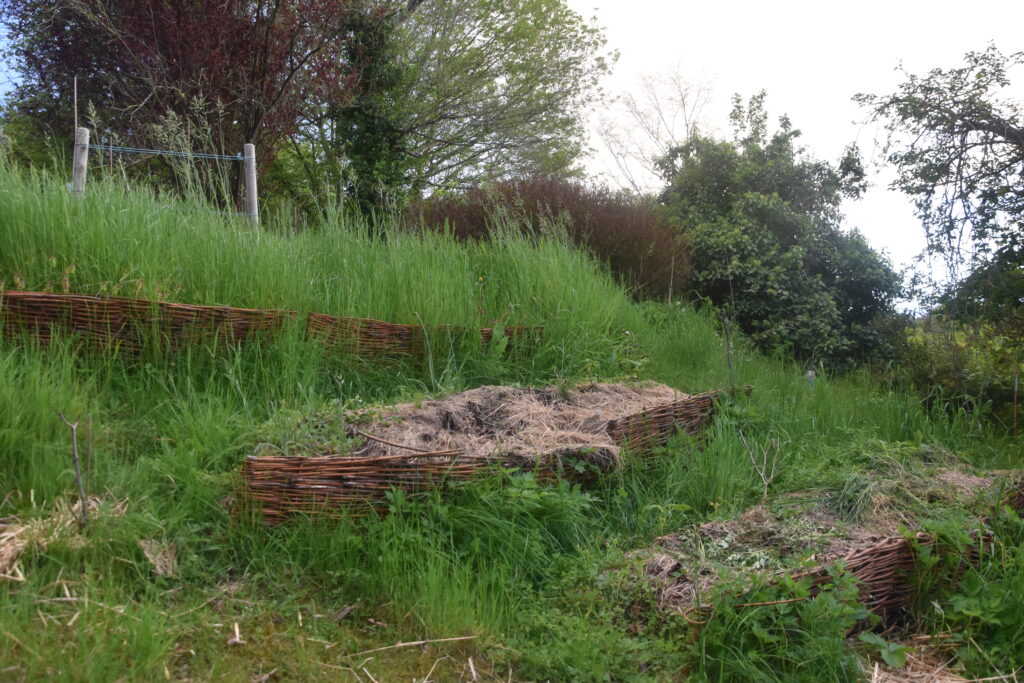
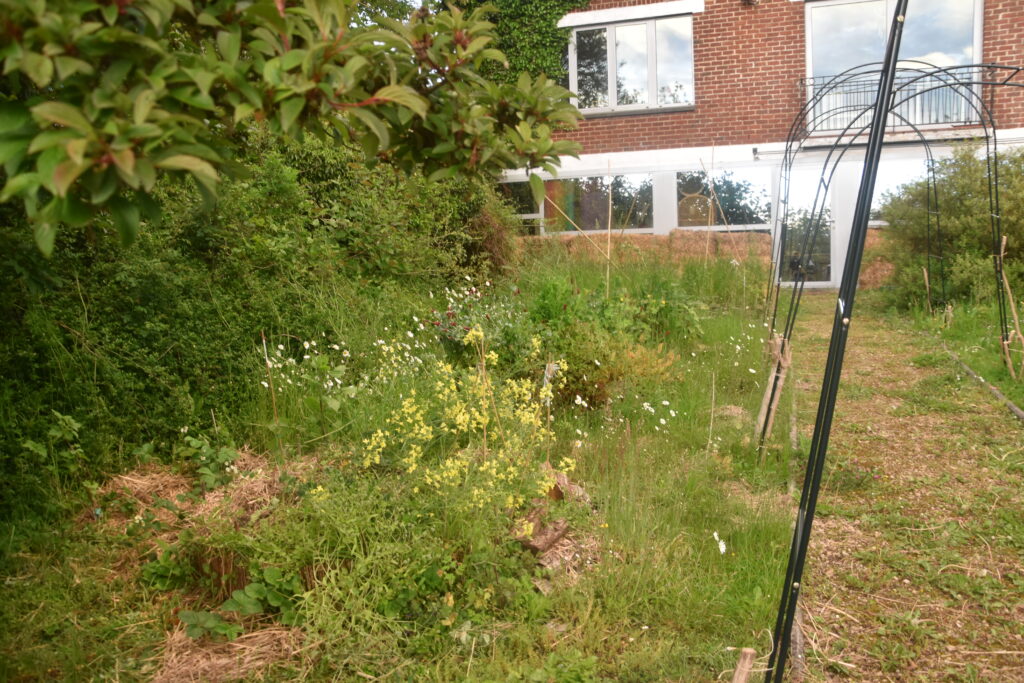
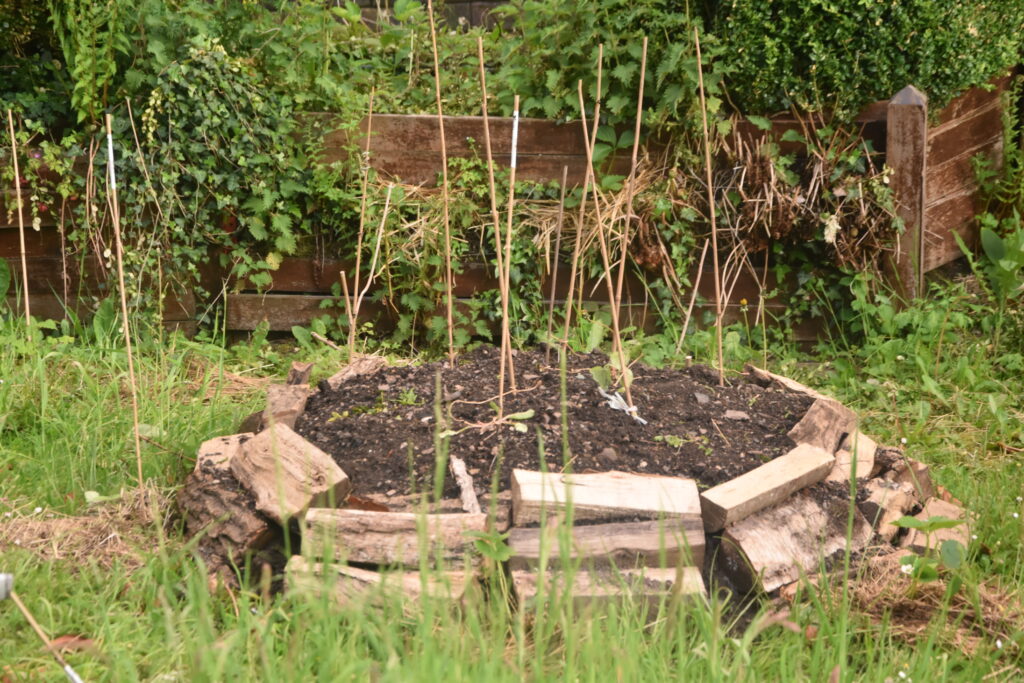
The edible forest template
It is because we are in the inverse that we have always been encouraged to waste and destroy instead of using the resources around us. For example, human excrement is a usable raw material that can enrich the soil, which is why the system is designed to take it far away from us. Nature does a wonderful job of providing an abundance of options. Poverty has been finely engineered. Monocultures only exploit the quantitative production of a single product. A conventional orchard forms an association not found in nature, it is more vulnerable to disease. It is important to think about getting out of the overwhelming dependence on a few dozen domesticated foods. It is also key to get out of the monoculture of fruit trees. The system has encouraged man to force the plant to behave in a certain way. Man has been taught to work against nature and to work harder and harder, imprinting negative core beliefs linked to hard work.
An edible forest is designed to provide fruits, nuts, vegetables, medicinal plants and wood through its various layers of fruit and food trees, shrubs, bushes, herbaceous plants, root vegetables and tuberous plants, ground covers, climbing vines and edible flowers such as mallows, daylilies, nasturtiums, violets, hibiscus or zucchini flowers. The maintenance work is low and time and energy are saved thanks to the perennial plants that take care of reseeding themselves. These wooded areas also help to cushion climatic shocks. Dead wood and moss develop, slowly returning moisture to the environment when needed. The roots of the trees are able to bring up water from deep layers. A plant does not grow where it grows by chance; it has a role to play. Some plants considered invasive are there to make the future possible. It is the role of the mesofauna layers and the roots to turn the soil naturally. The organic products of department stores are tasteless and unethical; their sugar and mineral content is lower than that of alternative market gardening products. In the face of the challenges we face, it remains important to take our share while giving back all that we are capable of, creating beauty and abundance as much as we can.
Hybridization and controlled opposition around seed preservation
Industrialists make their plants sterile. F1 seed varieties are presented as “more resistant to disease, more productive  and more uniform”. However, we are well aware that what is presented on paper often hides a hidden purpose. There is a big difference between what is advertised and the covert agenda carrying principles of destruction, reduction and extinction of life. Genetically modified crops are not there to increase production and feed more people. Such seeds may
and more uniform”. However, we are well aware that what is presented on paper often hides a hidden purpose. There is a big difference between what is advertised and the covert agenda carrying principles of destruction, reduction and extinction of life. Genetically modified crops are not there to increase production and feed more people. Such seeds may be more “profitable” and “practical” in the short term, but all living things will pay a high price. What are we willing to turn a blind eye to out of concern for profitability or simply out of fear? These kinds of decisions lead us right into the abyss. To harvest our own seeds and be self-sufficient, they must be reproducible.
be more “profitable” and “practical” in the short term, but all living things will pay a high price. What are we willing to turn a blind eye to out of concern for profitability or simply out of fear? These kinds of decisions lead us right into the abyss. To harvest our own seeds and be self-sufficient, they must be reproducible.
M any associations whose front is dedicated to ecology and environment are part of controlled opposition. They claim to protect seeds and to raise awareness. These “celebrities” of environmentalism can be found on TV and in mainstream and alternative magazines, which are also under control. However, the discourse is purely intellectual, nothing is learned, concepts are being stirred up to be seductive on intellectual grounds, the aim being to anaesthetize and keep the listener, reader or viewer sedated.
any associations whose front is dedicated to ecology and environment are part of controlled opposition. They claim to protect seeds and to raise awareness. These “celebrities” of environmentalism can be found on TV and in mainstream and alternative magazines, which are also under control. However, the discourse is purely intellectual, nothing is learned, concepts are being stirred up to be seductive on intellectual grounds, the aim being to anaesthetize and keep the listener, reader or viewer sedated. These associations will claim to be fighting against Monsanto and yet they play in the same class, polarizing the discourse, asking us to choose a side, which is not an answer either – we would still be in their courts. It is difficult to know what is done to the seeds sold in the catalogs of such associations. The principle of mistrust is to be applied in the face of such associations and what they do. It is important not to be seduced by their large catalogs and to obtain seeds from trusted smaller producers whom we know personally.
These associations will claim to be fighting against Monsanto and yet they play in the same class, polarizing the discourse, asking us to choose a side, which is not an answer either – we would still be in their courts. It is difficult to know what is done to the seeds sold in the catalogs of such associations. The principle of mistrust is to be applied in the face of such associations and what they do. It is important not to be seduced by their large catalogs and to obtain seeds from trusted smaller producers whom we know personally.

Such operations, which are hiding under humanitarian disguises, are designed to shape public opinion while diverting attention from the root of the problems. These are sophisticated disinformation projects based on easily predictable psychological responses (the hegelian dialect of problem-reaction-solution), using predictive programming and designed to disseminate controlled alternative information. It can be  observed that, very often, the discourse seduces the intellect, concepts are being shuffled to seduce the way we think, with a certain form of anesthesia and sedation. The discourse claims to stand against Monsanto; on closer inspection, it remains polarized into good and evil, good guys versus bad guys, continuing to appeal to the wounded ego and a sense of justice activism that lies dormant inside many of us. Yet,making decisions from a wounded state leads us to easily predictable reactions. A handful of people behind the curtain continue to take advantage of these mechanisms to hijack the actions we are putting in place for profound positive changes in favor of living things to take place.
observed that, very often, the discourse seduces the intellect, concepts are being shuffled to seduce the way we think, with a certain form of anesthesia and sedation. The discourse claims to stand against Monsanto; on closer inspection, it remains polarized into good and evil, good guys versus bad guys, continuing to appeal to the wounded ego and a sense of justice activism that lies dormant inside many of us. Yet,making decisions from a wounded state leads us to easily predictable reactions. A handful of people behind the curtain continue to take advantage of these mechanisms to hijack the actions we are putting in place for profound positive changes in favor of living things to take place.

 As I began my apprenticeship, I sometimes decided to leave aside what was shared in a book, because the author’s frequency seemed to be far from organic logic. At the same time, I gained information about the author’s mind control. Similarly, some permaculteurs simulate a false passion and take all their content from more authentic accounts. I frequently had to unsubscribe, receiving a very dark energy in the shared emanation. Some investigations made me understand that in some cases it was conscious controlled opposition (symbolism of inverted elites). These agents
As I began my apprenticeship, I sometimes decided to leave aside what was shared in a book, because the author’s frequency seemed to be far from organic logic. At the same time, I gained information about the author’s mind control. Similarly, some permaculteurs simulate a false passion and take all their content from more authentic accounts. I frequently had to unsubscribe, receiving a very dark energy in the shared emanation. Some investigations made me understand that in some cases it was conscious controlled opposition (symbolism of inverted elites). These agents weave links with individuals with real potential, vectors of real change, to subtly influence the chessboard. At the same time, these kinds of people do not activate or inspire the people who are following their work; they copy what is real and true, steal ideas and integrate them. We must be careful not to associate ourselves with such agents of the control system because it harvests a part of our most precious asset: the time we are given in this reality to change and influence the course of things.
weave links with individuals with real potential, vectors of real change, to subtly influence the chessboard. At the same time, these kinds of people do not activate or inspire the people who are following their work; they copy what is real and true, steal ideas and integrate them. We must be careful not to associate ourselves with such agents of the control system because it harvests a part of our most precious asset: the time we are given in this reality to change and influence the course of things.
From this website, read also: “On the hoax of man-made climate change and the necessity to deprogram predictable reactive behaviours”
—
 Ariane grew up in Belgium and has been keeping on opening her eyes about the level of control and engineering in her life up to her friendships, romantical involvments and her travels and the way her energy has been used in covert projects (daytime and nightime). Gradually, the level of strangeness in her life increased with experiences related to mind control in the yoga, festival and healing scene. She researches and teaches about the depth of the programming and nets we are going through here in the game and inner settings of programmed personalities that are leading to much distraction. Encountering health issues, Ariane has experienced a dozen of long liquid fasts to heal her body and has learned the principles of the mucusfree and mucuslean ways of eating. She keeps on reconnecting with her clairsentience and clairknowing abilities and is assisting others on their deprogramming journeys. She is teaching how to reclaim health with an alkaline way of eating and many practical tools, how to break free from the handling energies all around us and how to keep on freeing ourselves from mind control in courses and one-on-ones. Ariane works with the Energy ReMastered app which helps to bring the shadow work up to the forefront and the visible. She shares content on her youtube channel and on her website ariapersei.com in both english and french.
Ariane grew up in Belgium and has been keeping on opening her eyes about the level of control and engineering in her life up to her friendships, romantical involvments and her travels and the way her energy has been used in covert projects (daytime and nightime). Gradually, the level of strangeness in her life increased with experiences related to mind control in the yoga, festival and healing scene. She researches and teaches about the depth of the programming and nets we are going through here in the game and inner settings of programmed personalities that are leading to much distraction. Encountering health issues, Ariane has experienced a dozen of long liquid fasts to heal her body and has learned the principles of the mucusfree and mucuslean ways of eating. She keeps on reconnecting with her clairsentience and clairknowing abilities and is assisting others on their deprogramming journeys. She is teaching how to reclaim health with an alkaline way of eating and many practical tools, how to break free from the handling energies all around us and how to keep on freeing ourselves from mind control in courses and one-on-ones. Ariane works with the Energy ReMastered app which helps to bring the shadow work up to the forefront and the visible. She shares content on her youtube channel and on her website ariapersei.com in both english and french.
All the very best and sincerely,
Ariane
~~~~
Join me
Articles and online content on cellular detoxification and deprogramming
www.ariapersei.com
Videos
https://www.youtube.com/channel/UCp8MRN081xmonGQ_YFJuBZA
Courses
https://www.ariapersei.com/courses/
Connect on social media
https://linktr.ee/ariapersei
Thank you for visiting,
Ariane
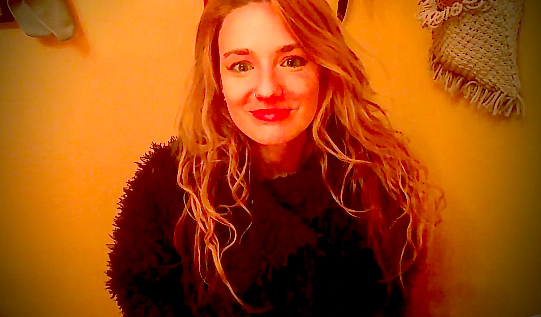
ARIA PERSEI ❣2018 – 2022 ©
– Come Like Us on Facebook – Check us out on Instagram –
– Sign Up for our Newsletter –


